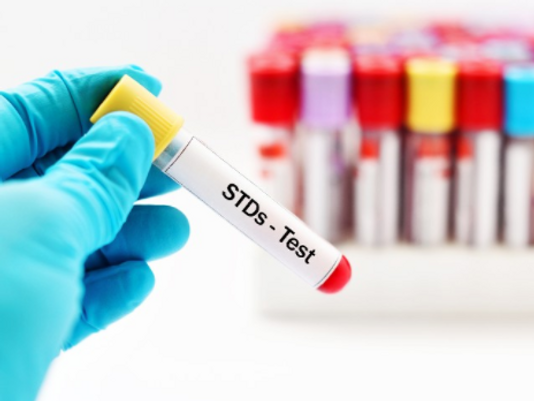
STD Infections In The U.S. Reach A Record High
CDC warns about rise in STD’s
On Tuesday, a new report from the Center for Disease Prevention and Control announced that nearly 2.3 million cases of syphilis, gonorrhea, and chlamydia were diagnosed in 2017—the highest number ever reported in the U.S. Since 2013, diagnoses of gonorrhea, syphilis, and chlamydia are up 67 percent, 76 percent, and 21 percent, respectively. Chlamydia, the most common of the three diseases, saw 1.7 million cases last year.
There’s a breadth of factors at play in rising sexually transmitted disease rates. More babies are being born with STDs, since their mothers are more likely to be infected. And chlamydia detection could be getting better for women, who may be undergoing increased screening. But one of the main drivers are the massive budget cuts public-health centers and STD programs have seen over the past few years. When underfunded, these initiatives decrease their hours and staff, and sometimes close altogether, making STD detection and treatment more difficult.
The CDC acknowledges that budget cuts are posing an increasing challenge at battling the spread of STDs. Since 2003, the CDC’s STD-prevention budget has decreased by 40 percent. A 2012 article in Harvard Public Health noted that only three percent of government health spending went to public health programs, and 52 percent of state and local STD programs experienced budget cuts; ultimately, 21 local health departments across the country closed as a result. These cuts have come from multiple administrations, and the Trump Administration recently proposed a 17 percent cut to the 2019 STD-prevention budget, which could only make the STD problem worse.
It’s not a coincidence STDs are skyrocketing—state and local STD programs are working with effectively half the budget they had in the early 2000s,” David Harvey, the executive director of the National Coalition of STD Directors, says in a press release. “Right now, our STD-prevention engine is running on fumes.”
Heidi Swygard, the epidemiologist for the North Carolina Department of Health and Human Services HIV/STD Prevention and Control Branch, noted the peril of the plummeting budgets. “We have a public-health workforce that is being asked to do at least as much as they were in 2003, if not maybe a little bit more with fewer resources,” she says. “There just aren’t the boots on the ground. And if you can’t treat, then you have ongoing transmission in the community.”
Planned Parenthood, which in 2017 facilitated 4.4 million STD tests, addressed the crushing effect of budget cuts on providing people access to treatment.
“Improving people’s access to health care and preventing public-health crises like rising STD rates require that policymakers invest in making STD testing and treatment more accessible, not less,” says Gillian Dean, the senior director of medical services at Planned Parenthood Federation of America. Sex education in school, which is when many young people learn not only about pregnancy prevention but STD prevention, has seen recent cuts as well.
Gail Bolan, the director of the CDC’s Division of STD Prevention, points out that these rising STD rates particularly affect two populations: women and gay men. Women who catch STDs at a young age, she says, can contract pelvic inflammatory disease as a result, which then can lead to ectopic pregnancies, infertility, and congenital STDs. Gay and bisexual men, who already receive poorer care due to stigma and lack of provider awareness, make up nearly 70 percent of the most infectious stages of syphilis where the gender of the sex partner was known.
Beyond budget cuts, additional factors like dating apps and decreasing condom use appear to be affecting STD rates among gay men, Swygard says. Dating apps “make it hard for us to track the sexual contacts of infected individuals, so that we can get those folks screened and treated as well … The reality is that we have a population that’s sort of living in the virtual world,” she says.
Further, she notes, when men who have sex with men rely primarily on PrEP—a medication that can protect against HIV infection—their rate of condom usage might go down, making them more susceptible to STDs PrEP doesn’t protect against.
Women often may not realize they have an STD, says Swygard, since “by virtue of our anatomy” these diseases aren’t always immediately symptomatic. And not getting screened regularly is dangerous, she says. “We have seen almost a 40 percent increase in congenital syphilis, because mom was not screened, or mom was screened and then not re-screened and got infected during pregnancy.”
Bolan points out that the reasons behind this STD outbreak are complex, and that no single solution will stop the problem. “Many communities and medical providers are not aware of the problem,” she says. “The most important thing we do is outreach and educate the communities and the medical sector.”




